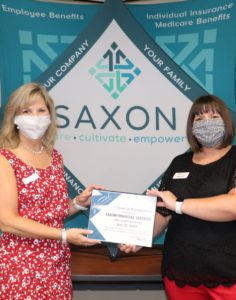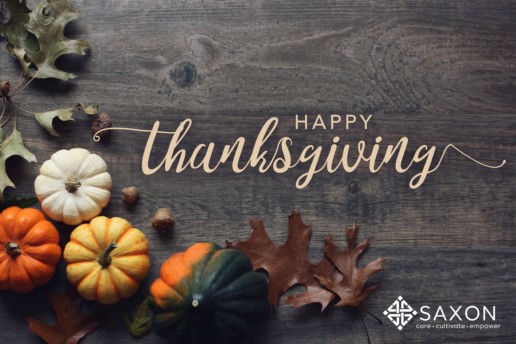ARPA: What Employers Need to Know
On March 10, 2021 Congress passed the American Rescue Plan Act (ARPA) of 2021, which was signed into law on March 11th. The ARPA attempts to address and help mitigate some of the far-reaching financial impacts of the COVID-19 pandemic. In addition to those provisions, the ARPA contains provisions that are of special interest to employers and employees.
into law on March 11th. The ARPA attempts to address and help mitigate some of the far-reaching financial impacts of the COVID-19 pandemic. In addition to those provisions, the ARPA contains provisions that are of special interest to employers and employees.
The ARPA Nitty Gritty
- COBRA Subsidy - A 100% premium subsidy is provided, funded through employer tax credits.
- FFCRA Leave - Employer tax credits have been extended through September 30, 2021.
- FFCRA Leave - Inclusion of testing and immunization as qualifying reasons for FFCRA leave.
- FFCRA Tax Credits - Definition of employee earnings eligible have been expanded.
- Unemployment - The $300 weekly increase has been extended and expanded.
- ACA - Exchange insurance subsidies are increased.
- DCAP - Contribution limits have been increased.
- Employee Retention Tax Credit - Extended and expanded eligibility for some businesses.
Let's Break It Down
COBRA Subsidy
What is it?
COBRA (Consolidated Omnibus Budget Reconciliation Act of 1986) allows employees who would lose employer-sponsored health insurance because of job loss (or reduction in working hours) to continue that insurance for 18 months. However, the employer can require the employee that elects COBRA coverage to pay the entire cost of the premium oftentimes creating a necessary, but an unexpected financial burden for the employee.
ARPA Provisions
- 100% subsidy of COBRA premiums from April 1, 2021, through September 30, 2021, for employees and their family members who lost health insurance due to involuntary termination or reduction in hours of their employment
- Allows employees who declined COBRA coverage, or elected it and dropped it, to elect subsidized COBRA
- Does not apply to employees who voluntarily terminated their employment or who qualify for another group health plan
Who Pays For It?
The subsidy is funded through the federal government through a refundable payroll tax credit.
Action Steps
- New employee notice requirements for plan administrators will be issued by the US Department of Labor
- Employees may elect subsidized COBRA starting April 1, 2021, through 60 days after receiving notice of the benefit
FFCRA Leave
What is it?
FFCRA (Families First Coronavirus Response Act) was passed in March 2020 and provided a tax credit for employers to fund two types of paid employee leave required by the law. These leave requirements expired in December 2020, but for employers that chose to continue providing FFCRA leave voluntarily, the tax credit was extended through March 2021.
ARPA Provisions
- Extends tax credit through September 30, 2021
- Adds a provision to include employee time off related to COVID-19 testing and immunization
- Increases the amount of wages eligible for the family leave credit from $10,000 to $12,000 per employee
- Provides an additional 10 days of voluntary emergency paid sick leave for employees beginning April 1, 2021
Unemployment
What is it?
Due to the COVID-19 pandemic, unemployment provisions were expanded under the previous administration to include three new federal unemployment programs. These programs were scheduled to end no later than April 2021.
- Pandemic Unemployment Assistance (PUA): Provided weekly benefits to independent contractors, self-employed individuals, and other workers that typically would not be eligible for unemployment benefits
- Pandemic Emergency Unemployment Compensation (PEUC): Provides weekly benefits to individuals who have exhausted their eligibility for all other unemployment benefits
- Federal Pandemic Unemployment Compensation: Provides an additional $300 weekly payment to individuals already receiving PUA, PEUC, or regular unemployment benefits
ARPA Provisions
- Previously established provisions that were set to expire have been extended through September 6, 2021
- Changes how unemployment benefits are taxed, exempting the first $10,200 from federal income tax for each spouse in households with under $150,000 in adjusted gross income.
ACA
What is it?
The ACA (Affordable Care Act) established health insurance exchanges for the purchase of individual health insurance coverage, as well as premium tax credits. These tax credits are not available to individuals with income at or above 400% of the federal poverty level.
ARPA Provisions
- Temporarily eliminates the income cap on subsidies for a period of two years
- Limits the total amount a household is required to pay for health coverage through the Exchanges to 8.5% of household income
- Increases federal subsidy amounts available for lower-income individuals, in some cases eliminating premium costs entirely
- Increases federal funding intended to encourage states to expand Medicaid programs (if they previously had not done so)
- All provisions are temporary and will expire in two years
DCAP
What is it?
A DCAP (Dependent Care Assistance Plan), also sometimes referred to as a dependent care flexible spending account (FSA), is an employee benefit plan that helps employees pay for the care of a qualifying dependent, such as a child or elder, as defined by Internal Revenue Service (IRS) regulations.
ARPA Provisions
- Increases annual contribution limit from $5,000 to $10,500 ($2,500 to $5,250 for married filing separately) for tax years beginning after December 31, 2020 and before January 1, 2022
- Employers meeting requirements can retroactively amend plans to incorporate the increase
Action Steps
- Employers with DCAPs can retroactively amend plans, if
- The amendment is adopted by the last day of the plan year in which it is effective; and
- The plan operates consistently with the terms of the amendment until it is adopted.
- It is recommended that you speak with your benefits advisor to ensure plans meet the requirements and stay in compliance
Employee Retention Tax Credit
What is it?
The Employee Retention Tax Credit was originally enacted with the CARES (Coronavirus Aid, Relief and Economic Security) Act. The credit was tended to encourage employers to retain employees on their payroll who were unable to work due to COVID-19 related reasons. This credit was set to expire in June of 2021.
ARPA Provisions
- Extends the credit through the end of 2021
- Expands eligibility to some small startups that began operating after February 15, 2020. Qualifying businesses will be eligible for a maximum credit of up to $50,000 per quarter even if they do not experience an eligible decline in gross receipts or a full or partial suspension
- Creates a new provision for 'severely financially distressed' employers which beginning in the third quarter of 2021 allows employers of any size to count all wages toward the $10,000 cap.
Saxon Gives Back
Community Strong: FamiliesFORWARD
Saxon took time out to give back by assembling school supply kits for FamiliesFORWARD.
FamiliesFORWARD is a neighborhood-based resource center devoted to helping children reach their full potential through many programs and partnerships within the community. We invite you to take a few moments to learn more about the FamiliesFORWARD mission and how you can get involved.
Saxon Financial Services Expands to Open Office in Dayton
Saxon Financial Services has broadens Ohio market footprint with expanded services and accessibility for Dayton area customers. COVID-19 related precautions and protocols have been established to protect staff and community while providing personal, friendly expertise to Dayton-area customers. Read on to learn more about this exciting announcement.
Dayton, Ohio – Saxon Financial Services is excited to announce the expansion of offices into the Dayton, Ohio area. This new office will be able to provide services such as: Employee Benefits, Supplemental Benefits and Corporate Retirement Planning (401, 403, Simple, SEPs). Eventually, Saxon will expand their individual wealth management team to the Dayton offices, too.
“Expansion in the Dayton market is a deliverable to our Dayton clients that has been in the works for some time, so I am very excited to have a physical presence in Dayton,” states Jamie Charlton, CEO at Saxon Financial Services.
Saxon has had the opportunity to maintain client relationships in Dayton and its surrounding suburbs for many years. Therefore, Dayton remains an important aspect of Saxon’s growth strategy. The success of Kettering native and Saxon Group Benefits Consultant, Kelley Bell, in the Dayton market during the past three years has provided Saxon the ability to maintain an active presence in the Dayton marketplace. The goal is to make Dayton aware they are fully committed to the communities they work in and serve. Kelley will be personally involved and in charge of their new Dayton office in Beavercreek Office Suites starting July 1, 2020.

Opening During COVID
Saxon is taking every caution they can to maintain a healthy and safe environment for each employee and client that walks through their doors. Saxon takes the recent outbreak of the COVID-19 virus seriously, and they continue to adhere to the rules set forth by Governor DeWine’s office. As a facilitator of client’s medical plans, they have been open the duration of the epidemic to ensure they are able to address clients’ concerns. During this time, they are allowing their staff the choice of working from home.
“As a facilitator of healthcare plans, we have seen the impact that COVID is having not only on the health of individuals but also small businesses. This pandemic has affected everyone on all levels. I have challenged our team at Saxon with the goal to make the life transitions people are experiencing as smooth as possible. This situation is not only creating physical maladies but is taking a toll on the mental aspect of everyone. It is crucial for everyone to understand the resources available to maintain their physical and mental well-being,” explains Charlton.
Overall, Saxon is excited to be able to expand into the area of Dayton.
“The expansion of Saxon to the Dayton market is an exciting time for our firm. Given our past and current success in this market, it is a move that simply makes sense. I am further excited to have Kelley Bell serving as our market leader in this space. Kelley was born and raised in Dayton, and she has always called Dayton home. I know she will continue to deliver to the Dayton small business community impactful solutions to the ever changing employee landscape,” states Charlton.
About Dayton Market Leader

Kelley Bell has over 25 years of experience in the financial industry. Kelley enjoys partnering with business owners and those responsible for choosing benefits for their employees. She understands that every business is unique and is dedicated, accessible and proactive in serving the needs of each client. Kelley has a strong business network and serves the Dayton and Cincinnati markets. She has recently been named Dayton Chamber’s 2019 Ambassador of the Year award recipient. This award honors the ambassador who demonstrated exemplary efforts in working with members each year.
About Saxon Financial Services
From employee benefits and insurance to wealth management and retirement, Saxon’s team of experts is knowledgeable on cutting-edge techniques that focus on controlling rising healthcare costs while still delivering solutions with compassion and transparency to you and your organization. With caring, knowledgeable experts working to service your needs, Saxon brings an element of strategic innovation to the conversation. We strive daily to lay the foundation for long-term relationships with our clients because we care about being a partner you can count on.
For more information, you can contact Brianna Louder, Saxon’s Marketing and Community Outreach Coordinator, at blouder@gosaxon.com or 513.774.5480
The Saxon Advisor - May 2020
Compliance Check
what you need to know
Eligible Automatic Contribution Arrangement (EACA). For failed ADP/ACP tests, corrective distributions must be made towards participants within 6 months after the plan year ends – June 30, 2020.
SF HSCO Expenditures. The last day to submit SF HSCO expenditures, if applicable*, for Q2 is July 30, 2020. *Applicable for employers with 20+ employees doing business in SF and Non-Profits with 50+ employees.
Form 5500 and Form 5558. The deadline for the 2019 plan year’s Form 5500 and Form 5558 is July 31, 2020 (unless otherwise extended by Form 5558 or automatically with an extended corporate income tax return).
Form 8955-SSA. Unless extended by Form 5558, Form 8955-SSA and the terminated vested participant statements for the plan year of 2019 are due July 31, 2020.
Form 5558. Unless there is an automatic extension due to corporate income tax returns, a single Form 5558 and 8955-SSA is due by 2½ months for the 2019 plan year.
Form 5330. For failed ADP/ACP tests regarding excise tax, Form 5330 must be filed by July 31, 2020.
401(k) Plans. For ADP/ACP testing, the recommended Interim is due August 1, 2020.
In this Issue
- Upcoming Compliance Deadlines:
- Eligible Automatic Contribution Arrangement (EACA)
- The deadline for the 2019 plan year’s Form 5500 and Form 5558 is July 31, 2020.
- Providing an HSA, FSA, or HRA Health Plan for your Employees
- Fresh Brew Featuring Lexi Kofron
- This month’s Saxon U: How To Legally Work With Gig And Contract Workers
- #CommunityStrong: Families Forward Donation Drive
How To Legally Work With Gig And Contract Workers
Join us for this interactive and educational Saxon U seminar with Pandy Pridemore, The Human Resources USA, LLC, as we discuss how to legally work with Gig and Contract Workers.
Providing an HSA, FSA, or HRA Health Plan for your Employees
Bringing the knowledge of our in-house advisors right to you...
When open enrollment hits annually, it is not uncommon for employers to feel exasperated when staring down a list of acronyms such as HSA, FSA and HRA. As it should go without saying, the most common first thought is, “What does any of this mean?” Even the most seasoned experts have difficulty with understanding the complexities of various care options.
““It is your account; yours if you leave the employer and can contribute as long as you have an HDHP and can use the funds until they are gone, even if you are no longer in an HDHP.” said Kelley Bell, a Group Health Benefits Consultant at Saxon Financial.
Fresh Brew Featuring Lexi Kofron
"Stay calm and collected on phone calls, and stay organized!"
This month’s Fresh Brew features Lexi Kofron, a Client Service Specialist at Saxon.
Lexi’s favorite brew is a Cinnamon Dolce Latte. Her favorite local spot to grab his favorite brew is at Starbucks
Scott’s favorite snack to enjoy is Pretzels and Hummus.
This Month's #CommunityStrong:
Families Forward Donation Drive
This May the Saxon family donated a bunch of household items and outdoor activities to Families Forward. Their staff goes out each week in masks and gloves to hand out these donations to the families in need through their program. Here are some pictures they provided when they passed out the donations and our trunk load of donations!
Are you prepared for retirement?
Saxon creates strategies that are built around you and your vision for the future. The key is to take the first step of reaching out to a professional and then let us guide you along the path to a confident future.
Monthly compliance alerts, educational articles and events
- courtesy of Saxon Financial Advisors.

The Saxon Advisor - April 2020
Compliance Check
Easy to Digest, Monthly Need-to-Knows
The Current 30
APRIL 1: Required Minimum Distribution. Deadline to take first RMD for terminated participants following attainment of age 70 1/2 or retiring after 70 1/2 in prior calendar year.
APRIL 1: Form 1099-R. Deadline for employers to file electronically with the IRS.
APRIL 15: Excess Contribution Refunds (Over IRS Limit). Deadline to return excess retirement plan deferrals for the previous plan year.
APRIL 30: Annual Audit Time! For large 5500 filers, it is time to select an auditor and schedule your annual audit.
A Look Forward
MAY 15: Participant-Directed Plans. Benefit Statements for participant-directed plans and Participant Fee Disclosures are due.
JUNE 30: Eligible Automatic Contribution Arrangement (EACA). Corrective distributions for failed ADP/ACP tests must be made within 6 months after the Plan Year end.
JULY 31: Form 5500 and Form 5558. The deadline for the 2019 plan year’s Form 5500 and Form 5558 (5500 filing extension to October 15th).
JULY 31: Form 8955-SSA. Deadline to file Form 8955-SSA and the terminated vested participant statements for the plan year of 2019 (unless extended by Form 5558).
JULY 31: Form 5330. Deadline to file for excise tax on failed ADP/ACP test.
In this Issue
- It’s Annual Audit Time! For large 5500 filers, it is time to select an auditor and schedule your annual audit April 30, 2020.
- Benefit Statements for participant-directed plans and Participant Fee Disclosures are due May 15, 2020.
- Fresh Brew Featuring Olivia Childs
- This month’s Saxon U: How To Legally Work With Gig And Contract Workers
- #CommunityStrong: Donation Drive for Families Forward
How to Legally Work With Gig and Contract Workers
Join our May Saxon University as Pandy Pridemore discusses how to legally work with Gig and Contract Workers
What You Need to Know: The SECURE Act
Bringing the knowledge of our in-house advisors right to you...
In December of 2019, President Donald Trump passed the Setting Every Community Up for Retirement Enhancement Act or SECURE Act. Some of the Act aims at making it easier for small business owners to create more affordable and easier to administer retirement plans.
“There is a lot of hype in the government and media about how the SECURE Act will make it cheaper to sponsor a plan. I don’t know if recordkeepers could lower their annual costs any more than they have over the last 8 or 9 years; but it definitely will provide lower start-up costs through the tax credits, and make it easier to administer plans if utilizing a Safe Harbor approach or a PEP.”
Fresh Brew Featuring Olivia Childs
"Be sure to do the follow-up after a conversation!"
Olivia Childs is a Saxon Senior Solutions Specialist whose favorite catchphrase is, “We rise by lifting others,” by Eleanor Roosevelt. We invite you take a moment to get to know Olivia!
Olivia’s favorite brew is Chai Tea Latte. She admits that enjoying her drink while relaxing at Half Day Cafe and snacking on an Everything Bagel is hard to beat!
This Month's #CommunityStrong:
Donation Drive for Families Forward
It's time to work together to help meet a top priority need of a valued community program and the families they serve.
Are you taking a strategic approach to your financial big picture?
Saxon creates innovative strategies that will help you figure out how to get there, plan for the risks along the way, navigate complex tax code and understand the steps you need to take to protect and secure your future.
Monthly compliance alerts, educational articles and events
- courtesy of Saxon Financial Advisors.

The Saxon Advisor - March 2020
Compliance Check
what you need to know
Section 6055/6056 Reporting (Electronic Filing Deadline). Applicable large employers (ALEs) that sponsor self-insured health plans are required by Internal Revenue Code Sections 6055 and 6056 to report information about the coverage to the IRS yearly. IRS Forms 1094-C and 1095-C are used to report coverage information. March 31, 2020, is the deadline to submit these forms if employers are filing electronically.
COBRA General Notice. Employers who provide group health plans must provide a written General Notice of COBRA rights to all covered employees and spouses (if applicable). This notice must be provided 90 days after health plan coverage begins.
Summary Plan Description (SPD). Employers who offer group health plans that are subject to ERISA must provide Summary Plan Descriptions (SPD) to employees who newly enrolled at the beginning of the plan year by March 31, 2020.
Form 1099-R (Electronic Filing Deadline). Employers must file Form 1099-R with the IRS by March 31, 2020, if they are filed electronically.
Form 5330 Excise Tax Return. The Form 5330 excise tax return and payment for excess 2018 ADP/ACP contributions are due March 31, 2020.
Excess Contribution Refunds (over IRS limit). April 15, 2020 is the deadline to return excess retirement plan contributions for elective deferrals exceeding the 402(g) limits.
In this Issue
- Upcoming Compliance Deadlines
- Paving the Road to a Successful Portfolio Featuring Brian Bushman
- Upcoming Saxon U Webinar: Employee Navigator Workshop with Jake Meyer
- Fresh Brew Featuring Jake Meyer
- #CommunityStrong: American Heart Association Heart Mini Fundraising & School Donation Drive
Employee Navigator Workshop
Join us for this interactive and educational Saxon U webinar with Jake Meyer, Saxon Financial Services, as we walk you through certain aspects of Navigator and teach you how to use the most common features.
Paving the Road to a Successful Portfolio
Bringing the knowledge of our in-house advisors right to you...
Determining a proper asset allocation is an important first step in creating your portfolio and planning how it will grow in the future. Asset allocation is the process of diversifying your investments into different asset classes based on the investor’s time horizon, their goals and how much risk they can tolerate.
“People always ask me what they can invest in that will make them a lot of money without the chance of losing any,” said Brian Bushman, Saxon Financial Advisor.
Fresh Brew Featuring Jake Meyer
“Educate your employees about their benefits. The more they understand them, the more they will realize how big of a benefit they are.”
This month’s Fresh Brew features Jake Meyer, an Account Executive at Saxon.
Scott’s favorite brew is Rhinegeist Truth, a local Indian Pale Ale from the Rhinegeist Brewery in Cincinnati, Ohio.
Jake doesn’t have a particular snack that he eats when sipping on his favorite brew. He instead likes to enjoy the hops in his favorite IPA.
This Month's #CommunityStrong:
American Heart Association Heart Mini Fundraising
This March, the Saxon team and their families teamed up to raise money for the American Heart Association Heart Mini!
Do you have a strategic approach to the totality of your financial picture?
Saxon creates innovative strategies that will help you figure out how to get there, plan for the risks along the way, navigate complex tax code and understand the steps you need to take to protect and secure your future.
Monthly compliance alerts, educational articles and events
- courtesy of Saxon Financial Advisors.

The Saxon Advisor - February 2020
Compliance Check
what you need to know
Section 6055/6056 Reporting. Employers must file Forms 1094-B and 1095-B, and Forms 1094-C and 1095-C with the IRS by February 28, 2020 if they are filed on paper.
Form 1099-R Paper Filing. Employers must file Form 1099-R with the IRS by February 28, 2020 if they are filed on paper.
CMS Medicare Part D Disclosure. Employers that provide prescription drug coverage must disclose to the CMS whether the plan’s prescription drug coverage is creditable or non-creditable.
Summary of Material Modifications Distribution. Employers who offer a group health plan that is subject to ERISA must distribute a SMM for plan changes that were adopted at the beginning of the year that are material reductions in plan benefits or services.
Section 6055/6056 Individual Statements (2019 EXTENDED DEADLINE). Applicable large employers (ALEs) that sponsor self-insured health plans must disclose information about plan coverage to covered employees each year. This deadline was extended from January 31, 2020, to March 2, 2020, this year by the IRS.
ADP/ACP Refunds. Corrective refunds for a failed ADP/ACP test must be made by March 15, 2020, to avoid 10 percent excise tax penalties.
Section 6055/6056 Reporting (Electronic Filing Deadline). Applicable large employers (ALEs) that sponsor self-insured health plans are required by Internal Revenue Code Sections 6055 and 6056 to report information about the coverage to the IRS yearly. IRS Forms 1094-C and 1095-C are used to report coverage information. March 31, 2020, is the deadline to submit these forms if employers are filing electronically.
COBRA General Notice. Employers who provide group health plans must provide a written General Notice of COBRA rights to all covered employees and spouses (if applicable). This notice must be provided 90 days after health plan coverage begins.
Summary Plan Description (SPD). Employers who offer group health plans that are subject to ERISA must provide Summary Plan Descriptions (SPD) to employees who newly enrolled at the beginning of the plan year.
Form 1099-R (Electronic Filing Deadline). Employers must file Form 1099-R with the IRS by March 31, 2020, if they are filed electronically.
Form 5330. The Form 5330 excise tax return and payment for excess 2018 ADP/ACP contributions are due March 31, 2020.
In this Issue
- Upcoming Compliance Deadlines
- How to Speak to Your Employees About Their Intimidating Benefits – Featuring Jamie Charlton
- Fresh Brew Featuring Nat Gustafson
- This month’s Saxon U: What Employers Should Know About the SECURE Act
- March’s Saxon U: Saxon’s Humana GO365 Annual Wellness Clinic
- #CommunityStrong: American Heart Association Heart Mini Fundraising
What Employers Should Know About the SECURE Act
Join us for this interactive and educational Saxon U seminar with Todd Yawit, Director of Employer-Sponsored Retirement Plans at Saxon Financial Services, as we discuss what the SECURE Act is and how it impacts your employer-sponsored retirement plan.
How to Speak to Your Employees About Their Intimidating Benefits
Bringing the knowledge of our in-house advisors right to you...
Employers spend thousands annually to secure and offer benefits to their employees. However, a small amount of time and money are devoted to ensuring employees understand and appreciate their benefits. Properly communicating – what you say, how you say it and to whom you say it to – can make a tremendous difference in how employees think, feel and react to their benefits, employer and fellow co-workers.
In this installment of CenterStage, Jamie Charlton, founding partner and CEO of Saxon Financial Services, discusses the importance of offering sound education of benefits to employees, as well as how to effectively communicate their benefits in a clear, concise manner.
Fresh Brew Featuring Nat Gustafson
“Always be prepared.”
This month’s Fresh Brew features Nat Gustafson, an Account Manager at Saxon.
In his free time, Nat enjoys snowboarding. When thinking about his greatest adventure, he remembers traveling around Italy. He lives by the catchphrase of, “Roll up your sleeves.”
Nat’s favorite brew is Rhinegeist Truth. His favorite local spot to grab his favorite brew is Mount Lookout Tavern on Linwood Avenue.
Nat’s favorite snack to enjoy with his brew is Chicken wings.
This Month's #CommunityStrong:
American Heart Association Heart Mini Fundraising
This January, February & March, the Saxon team and their families will be teaming up to raise money for the American Heart Association Heart Mini!
Saxon’s Humana GO365 Annual Wellness Clinic
Learn what Go365 is, how it works, how to create engaged employees and how to maximize the 15% wellness incentive credit from the program.
Monthly compliance alerts, educational articles and events
- courtesy of Saxon Financial Advisors.

The Saxon Advisor - January 2020
Compliance Check
what you need to know
Form W-2s are due January 31, 2020. January 31 is the deadline for employers to distribute Form W-2s to employees. Large employers – employers who have more than 250 W-2s – must include the aggregate cost of health coverage.
Form 1099-Rs are due January 31, 2020. Employers must distribute Form 1099-Rs to recipients of 2019 distributions.
Form 945 Distributions. Form 945s must be distributed to plan participants by January 31, 2020, for 2019 non payroll withholding of deposits if they were not made on time and in full to pay all taxes that are due.
Section 6055/6056 Reporting. Employers must file Forms 1094-B and 1095-B, and Forms 1094-C and 1095-C with the IRS by February 28, 2020 if they are filed on paper.
Form 1099-R Paper Filing. Employers must file Form 1099-R with the IRS by February 28, 2020 if they are filed on paper.
CMS Medicare Part D Disclosure. Employers that provide prescription drug coverage must disclose to the CMS whether the plan’s prescription drug coverage is creditable or non-creditable.
Summary of Material Modifications Distribution. Employers who offer a group health plan that is subject to ERISA must distribute a SMM for plan changes that were adopted at the beginning of the year that are material reductions in plan benefits or services
In this Issue
- Upcoming Compliance Deadlines
- Traditional IRA, Roth IRA, 401(k), 403(b): What’s the Difference?
- Fresh Brew Featuring Scott Langhorne
- This month’s Saxon U: What Employers Should Know About the SECURE Act
- #CommunityStrong: American Heart Association Heart Mini Fundraising
What Employers Should Know About the SECURE Act
Join us for this interactive and educational Saxon U seminar with Todd Yawit, Director of Employer-Sponsored Retirement Plans at Saxon Financial Services, as we discuss what the SECURE Act is and how it impacts your employer-sponsored retirement plan.
Traditional IRA, Roth IRA, 401(k), 403(b): What's the Difference?
Bringing the knowledge of our in-house advisors right to you...
If you haven’t begun saving for retirement yet, don’t be discouraged. Whether you begin through an employer sponsored plan like a 401(k) or 403(b) or you begin a Traditional or Roth IRA that will allow you to grow earnings from investments through tax deferral, it is never too late or too early to begin planning.
“A major trend we see is that if people don’t have an advisor to meet with, they tend to invest too conservatively, because they are afraid of making a mistake,” said Kevin Hagerty, a Financial Advisor at Saxon Financial.
Fresh Brew Featuring Scott Langhorne
“Pay close attention to detail.”
This month’s Fresh Brew features Scott Langhorne, an Account Manager at Saxon.
Scott’s favorite brew is Bud Light. His favorite local spot to grab his favorite brew is wherever his friends and family are.
Scott’s favorite snack to enjoy with his brew is wings.
This Month's #CommunityStrong:
American Heart Association Heart Mini Fundraising
This January, February & March, the Saxon team and their families will be teaming up to raise money for the American Heart Association Heart Mini! They will be hosting a Happy Hour at Fretboard Brewing Company Wednesday, January 29, from 4 p.m. - 7 p.m. to raise money.
Are you prepared for retirement?
Saxon creates strategies that are built around you and your vision for the future. The key is to take the first step of reaching out to a professional and then let us guide you along the path to a confident future.
Monthly compliance alerts, educational articles and events
- courtesy of Saxon Financial Advisors.

Happy Holidays from Your Family at Saxon
Happy Holidays! In celebration of the holidays, the Saxon crew has decided to share one of our favorite holiday recipes for this month’s Fresh Brew! We hope you all have a safe and happy holiday season!
Three-Ingredient Prime Rib Roast
Ingredients
- 1/3 cup finely ground coffee
- 2 tablespoons kosher salt
- 1 tablespoon freshly ground black pepper
- 1/4 vanilla bean, split and seeds scraped
- One 12-pound, bone-in prime rib roast (5 bones)
Directions
- In a bowl, thoroughly blend the coffee with the salt, pepper and vanilla bean seeds. Set the rib roast in a roasting pan and rub it all over with the coffee mixture, concentrating most of the rub on the fatty part of the meat. Turn the roast bone side down and let stand at room temperature for 30 minutes.
- Preheat the oven to 450°. Roast the meat for 15 minutes. Reduce the oven temperature to 325° and roast for about 2 1/2 hours longer, until an instant-read thermometer inserted in the thickest part of the meat registers 125° for medium-rare.
- Transfer the roast to a carving board and let rest for 20 minutes. Scrape off any excess coffee rub. Carve the meat in 1/2-inch-thick slices and serve.

This recipe was provided by Food&Wine. If you’d like to visit the original source, please click here.
**Holiday Hours
Our office will be closed on Tuesday, December 24 and Wednesday, December 25.
Our office will be closed on New Year’s Day, Wednesday, January 1.
We wish you a happy holiday season filled with family and friends!
Give It A Try & Share It!

Thanksgiving Pie with the Saxon Family
Happy Holidays! In celebration of the holidays, the Saxon crew has decided to share one of our favorite holiday recipes for this month’s Fresh Brew! We hope you all have a safe and happy Thanksgiving!
Four-Flavor Sheet Pan Pie
Ingredients
Crusts:
- Two 14.1-ounce boxes refrigerated rolled pie crust (4 crusts total)
- All-purpose flour, for dusting
- 1 large egg, lightly beaten
- 1/4 cup turbinado sugar
Apple Pie:
- 2 pounds mixed apples (such as Granny Smith, Gala and McIntosh), peeled, cored and sliced 1/4-inch thick
- 1/4 cup granulated sugar
- 1 tablespoon fresh lemon juice
- 4 tablespoons unsalted butter
- 2 teaspoons all-purpose flour
- 3/4 teaspoon ground cinnamon
- Kosher salt
Sour Cherry Pie:
- 2 cups drained jarred sour cherries, plus 3/4 cup juice from the jar
- 2 tablespoons cornstarch
- 1/4 cup granulated sugar
Pumpkin Pie:
- 1 1/3 cups canned pure pumpkin puree
- 2/3 cup evaporated milk
- 1/2 cup granulated sugar
- 1 teaspoon pumpkin pie spice
- 1 large egg
Pecan Pie:
- 1/2 cup packed light brown sugar
- 1/2 cup light corn syrup
- 4 tablespoons unsalted butter, melted
- 1 teaspoon pure vanilla extract
- 2 large eggs
- Kosher salt
- 3/4 cup roasted pecan halves
Directions
- For the crusts: Preheat the oven to 350 degrees F. Unroll 3 of the pie crusts on a lightly floured work surface. Stack them on top of each other. Roll out the thick, layered dough to a 15-by-21-inch rectangle. Press into a rimmed baking sheet so that the crust comes up the sides and hangs over slightly. This will be the bottom crust. Chill until ready to use, at least 30 minutes.
- Use the remaining crust for the top of the pie. Unroll it on a lightly floured work surface and roll it to a 14-by-18-inch rectangle. Cut the dough in half so you have two 7-by-9-inch pieces. One half will be the top crust for the apple portion of the pie. Cut the other half into 1-inch diagonal strips to use for the lattice on the cherry pie. Place the rectangle and strips on a parchment-lined baking sheet and chill until ready to use.
- For the apple pie: Toss the apples in a medium bowl with the sugar and lemon juice. Melt the butter in a large skillet over medium-high heat, add the apples and cook, stirring occasionally, until tender, about 10 minutes. Stir in the flour, cinnamon and a pinch of salt and cook until thickened, about 1 minute more. Cool completely.
- For the sour cherry pie: Place the cherries in a medium bowl. Whisk 1/4 cup cherry juice with the cornstarch in a small saucepan until completely smooth. Add the remaining cherry juice and sugar and bring to a boil over medium-high heat. Cook, whisking constantly, until thick and glossy, about 30 seconds. Pour the sauce over the cherries and gently fold to combine. Cool completely.
- For the pumpkin pie: Whisk together the pumpkin, evaporated milk, sugar, pumpkin pie spice and the egg and in a medium bowl until smooth. Set aside.
- For the pecan pie: Whisk together the brown sugar, corn syrup, butter, vanilla, eggs and a pinch of salt in a medium bowl until smooth. Fold in the pecans and set aside.
- Once all fillings are made, begin assembling the pie. Remove both baking sheets with dough from the refrigerator.
- Visualize the sheet pan is divided in half lengthwise and then crosswise so you have 4 equal quadrants. Each quadrant will hold a different pie filling. Prick the bottom crust all over with a fork.
- Add the pie fillings in this order: Add the apple pie filling to the upper left quadrant of the crust; spread it to cover a 7-by-9-inch rectangle. Moving counter clockwise, pour the pumpkin filling right under the apple pie filling and spread it the same size as the apple filling. Spread out the cherry filling next to the pumpkin filling. Fill the top right empty space with the pecan filling.
- Cover the apple pie quadrant with the reserved rectangle of dough. Lay the pie strips out diagonally over the cherry pie quadrant. Press any remaining strips of dough around the edge of the pie to thicken the rim. Crimp the edge of the pie, making sure to incorporate and crimp together the dough from the apple quadrant. Brush the edges and the dough on top of the pie with egg and sprinkle with turbinado sugar. Cut decorative slits in the apple pie crust.
- Bake until all pies are set and the crust on the apple pie and cherry pie is golden brown and crisp, 55 minutes to 1 hour 5 minutes.

This recipe was provided by Food Network. If you’d like to visit the original source, please click here.
**Holiday Hours
Our office will be closed Thursday, November 28 and Friday, November 29. We wish you a happy Thanksgiving filled with family, friends and good food!



















